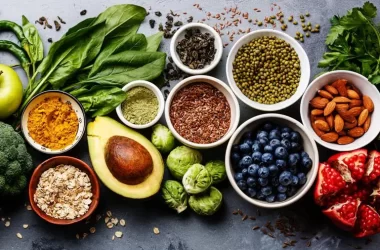China is known for its many regions and climates, each producing unique cuisines that reflect local traditions. Yet overall, Chinese food remains united through balance and contrast: the principle of yin-yang.
Chinese cooking requires fresh, high-quality ingredients. That includes live seafood and vegetables with vibrant hues; dumplings that plump and steam like dabao (big bun) or xiaobao (small bun); as well as chewy noodles packed full of flavorful nuts.
Dishes
China has long been famed for its culinary heritage and numerous delectable dishes available for dine-in and home consumption alike. When people in China say they are hungry, this signals something delectable is about to arrive. With thousands of years of culinary history behind it all, the possibilities are virtually limitless when it comes to satisfying one’s hunger!
Chinese cuisine is immensely diverse, featuring dishes with different flavours and cooking styles from region to region. Many dishes feature umami flavors from root garlic, five spice powder and soy sauce – giving each meal an irresistibly scrumptious umami-rich punch!
Mu shu pork (moo shu), from northern China, consists of stir-fried marinated pork with green onion and mushrooms wrapped in mandarin pancakes for easy eating. Another highly popular Chinese dish is mapo tofu from Szechuan which features bean paste, beef, and tongue-numbing Sichuan peppercorns simmered together into one delicious stew.
Vegetables
Chinese cuisine incorporates many leafy vegetables into its dishes, and many Asian greens are highly nutritious – boasting high levels of fiber, vitamins, and antioxidants.
At any morning market in China, you are sure to encounter at least 25 varieties of fresh leafy greens – and one of the most commonly seen vegetables is bok choy (pronounced bo-k chee). Also referred to as pak choi or chingensai, this vegetable belongs to the Brassica (cruciferous) family and shares similarities with broccoli, cauliflower and kale.
Gai Lan (jie-lan) is another beloved Asian veggie, known for being a cross between broccoli and Chinese cabbage. You’ll likely find it at most Asian markets and is frequently stir-fried or braised before being packed full of calcium and vitamin C!
Meat
Chinese dishes typically feature plenty of meat, such as Ji ji chicken, Ya ya duck, Yang yang lamb and Niu niu beef dishes – these all taste fantastic!
China is home to extreme poverty, so they make use of every animal they have by eating all parts of them – including pig trotters and heads that you might see for sale at supermarkets.
Rumors surrounding “mystery meat” in America often arise from the practice of some restaurants to tenderize less expensive cuts by soaking them overnight in a mixture of water and baking soda, which is illegal under US law but many Americans remain unaware of it. Luckily, the FDA inspects all restaurants so any attempt at using cat, dog, or rat meat for Chinese cuisine would likely prove very costly indeed.
Noodles
Noodles are an integral component of Chinese cuisine and can be found both fresh and dried versions. As part of these cuisines, noodles often feature prominently.
Traditional Chinese noodles are typically constructed of wheat flour and long in shape to signify longevity, though thinner noodles may occasionally be found as part of Chinese cuisine. Thicker versions may also exist but rarely broken apart into smaller pieces.
Noodles come in several forms – from steamed and fried varieties, as well as hot broth versions. You’ll find these types of noodles at Asian grocery stores as well as restaurants serving Southeast Asian classics such as pho and khao soi. Mai fun, an extremely wide white Chinese noodle variety is even widely available here in America under its more familiar moniker of pancit palabok.
Sauces
Chinese cuisine features an expansive range of sauces that add depth of flavor and variety to dishes, whether as dipping sauces, marinades or ingredients in recipes.
Light soy sauce is an indispensable element of many Chinese dishes, often found in stir fry sauces, soup bases and as a dipping sauce. Dark soy sauce offers an alternative that has deeper flavors compared to light soy.
Sweet bean sauce (Tian mian jiang) is another indispensable accompaniment. Made up of sugar, vinegar and ketchup, it pairs perfectly with Peking duck.
Plum sauce (sometimes known as duck sauce) is an aromatic combination of plums, apricots, sugar, and spices, making it the ideal accompaniment for egg rolls and spring rolls.








